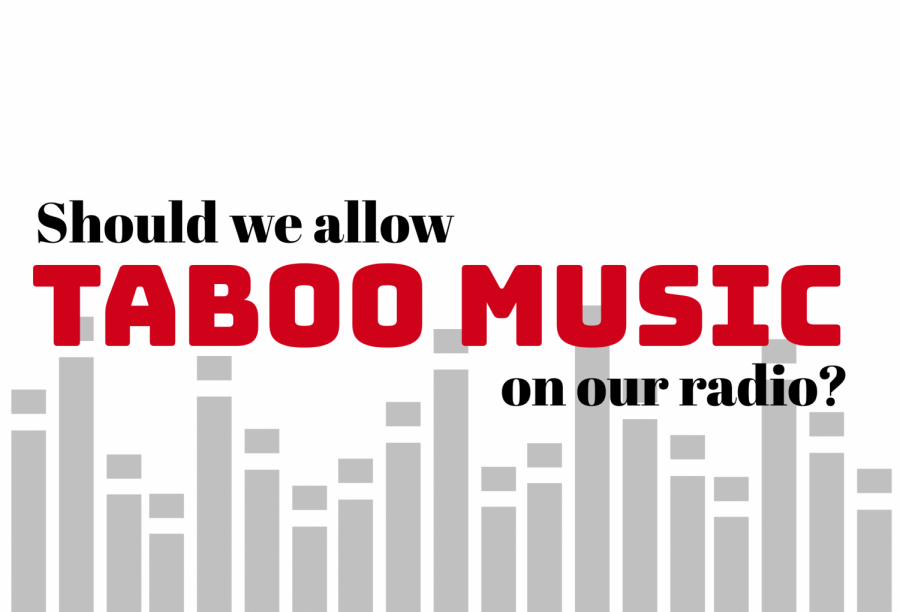Taboo Music
October 10, 2019
Since the beginning of time, art has existed to be a faucet of creativity. We are allowed to express our emotions and ideas, flex our freedom, and tell a story. Because of the freedom in art, some people are willing to cross the line of what is acceptable in society. These artists, of course, stir large amounts of controversy as public discourse ensues. This can range from simple conversation to people calling to take down the artwork. There have been a range of prolific musicians throughout recent history who have done this.
Controversy has been prompted across many different genres and concepts. Controversy can often lead to advancement in the rhetoric surrounding certain topics, such as depression or mental health. If pop culture begins to recognize and even normalize this, it could lead to advancements in removing stigma around such issues. Additionally, it is important to consider when discussing controversial music that it can be a coping mechanism. For many, art can be used as a form of catharsis, or the release of repressed emotions. This is an important and useful way for people to express their emotions.
Despite all of the benefits of accepting taboo music, there is another side that also has to be considered. When listening to controversial music, there is the chance that the song itself may be offensive to certain people, if not triggering or enabling. Songs such as “Rape Me” by Nirvana, about a rape survivor, or “Bastard” by Tyler the Creator, which dicusses Tyler’s past of depression and suicidal thoughts, might cause a visceral reaction from a listener. Furthermore, songs that are used in the form of catharsis such as “Kim” by Eminem, which follows a fictional Eminem killing his wife, might incite copycats, or people who find these things cool.
Additionally, there is shock value and glorification. Some people argue artists like Tyler the Creator use controversial topics and language in their music because it is more likely to bring in listeners. Shock value is something that we as consumers must be wary of, as it is a pure exploitation of the issue, rather than adding to rhetoric or supporting a story. There is also the potential glorification of an issue, whether or not the artist meant it. If the music itself places the controversial act, such as self-harm, harm of others, crime, etc., in a good light, could potentially be problematic.
Lastly, there is the argument of freedom of speech. When it comes to the fundamentals of art, most people would say that it is the artist’s right to be able to create whatever they like, despite how taboo or controversial a certain topic may be. This allows the artist to fully be able to critique, comment, or express themselves in any way that they would want. On the other hand, when discussing the idea of a story, and the freedom that comes with it, it is important to recognize what it is conventionally okay in story writing. In the song “She” by Tyler the Creator, he sings about a character known as Goblin (which might reflect a fictional alternate personality) stalking, spying, and fantasizing about having sex with a woman. However, in the song it is never explicitly promoted as something good, and rather a way to progress the entire story arc of the album it is off of, “Goblin.” If anything, Tyler portrayed this character as an evil alternative to himself.
Ultimately, as with all other forms of art, music should be left almost untouched. Music is and should be about expressing oneself whether or not through a story, retelling, or other sorts of fiction. For so many, music is meant to be something that they can connect to because they can find their own experiences within them. If music is given limits, it would deny someone’s basic right of freedom of speech. The only time that music should even considered being censored is when the song itself directly incites horrific actions. It is then, and only then, that a song should be taken down or completely censored.
































